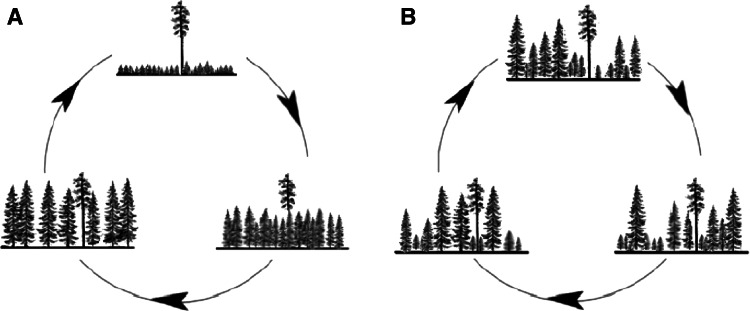Fig. 1.
An illustration of the two forest management systems to be compared in this study: the even-aged (a) and uneven-aged (b) forest management. At stand level, even-aged management comprises a clear and repetitive cycle of distinct phases, including the regeneration, growing, and thinning, and final harvesting where typically a low number of live retention trees are leaf on the clear cuts. In uneven-aged management the cyclic phases occur at smaller scale and are thus mixed in space and time at stand level. Here harvesting can be done either by removing individual trees uniformly throughout the stand or in small groups when the created small gaps provide microenvironments suitable for regeneration. Note that irrespective of the management system, permanent retention is a prerequisite if biodiversity conservation is a goal of forest management (Drawing: Tuomas Aakala)

